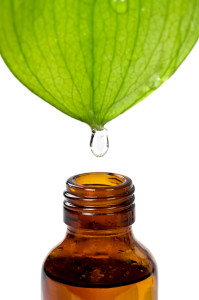 If you want to benefit from the special medical properties of a plant and its essential oil, you must know its botanical name. Take lavender. The name is used for several plant species with different medicinal attributes. Fortunately, all the lavender species have unique essential oil botanical names. For aromatherapy purposes, Lavendula angustifolia is the species with the classic desirable lavender attributes.
If you want to benefit from the special medical properties of a plant and its essential oil, you must know its botanical name. Take lavender. The name is used for several plant species with different medicinal attributes. Fortunately, all the lavender species have unique essential oil botanical names. For aromatherapy purposes, Lavendula angustifolia is the species with the classic desirable lavender attributes.
Why Essential Oil Botanical Names
Botanical names are unique. Every species has one botanical name. Worldwide people use the same botanical name when they refer to the particular species. In contrast, common names such as lavender, basil, or oak are inconsistently used for a species or a whole range of species. Hence, common names can be confusing. And, you don’t know which species you’re getting nor the medicinal properties.
The common name pine is an excellent example. There are many different types of pines such as white pine, scotch pine, Virginia pine, and red pine, to mention a few. But people use the name pine to refer to all of these species.
If you want others to know exactly which pine species you’re talking about, you need to be specific. In the case of pines, the unique essential oil botanical names for white pine, Scotch pine, and Virginia pine are, respectively Pinus strobus, Pinus sylvestris, and Pinus virginiana.
How to Interpret a Botanical Name
All botanical names are made up of two parts – the genus and individual species.
For example, black spruce has the botanical name of Picea mariana:
- Picea means that it is in the spruce genus
- mariana indicates that it is specifically the black spruce.
The two names together define the specific plant species, Picea mariana.
Common Characteristics Within a Botanical Family
Black spruce is in the broader pine family, Pinaceae. All spruce trees are in the same genus (Picea) and family (Pinaceae). Other members of the pine family include firs (genus Abies) and pines (genus Pinus). All of these trees possess characteristics that belong to the pine family. Pines are all evergreens, they have needles and cones and exude a sappy resin.
Spruces have additional characteristics that are shared within their genus. The same is true for firs and pines. For example, spruces (picea) have cones that dangle from their branches while firs (abies) have cones that stand erect, and on top of their branches.
Knowing Botanical Species Helps You Identify Healing Properties
Grouping plants and knowing which characteristics and therapeutic properties are associated with the family or genus, help us to quickly identify some of the likely healing characteristics of a particular species because plants of the same genus and family have some similar healing properties as well, e.g., trees in the pine family tend to support respiratory functioning.
Essential Oil Is Derived From a Single Plant Species
Essential oil is derived from one, and only one, plant species. They are made from the parts of plants that contain volatile components, i.e., substances that will evaporate. When the volatile components evaporate, they emit a distinct smell that can invoke physical, mental, emotional, energetic, or spiritual change. These volatile components work together to offer holistic healing, support balance, and well-being and provide sensual enjoyment.
While the scent is an important attribute, essential oils are commonly applied and absorbed through the skin as a critical ingredient in creams, salves, sprays, soap, and other products.
Depending on the specific plant and where the volatile components are located in that plant, essential oils are extracted from the flowers, leaves, twigs, roots, bark, resins, or fruits. Essential oils are highly concentrated mixtures comprised of these volatile components.
Use of Essential Oil Botanical Names In Aromatherapy
Knowing the family and genus also gives us a hint about the specific plant’s therapeutic properties. For example, pines are warming and antiseptic, and they are notable in their support to the muscular and respiratory systems. Knowing what the specific plant species tell you what specific and unique properties that plant has – perhaps attributes that other plants in the family or genus do not possess.
The Example of Lavender
To better understand this idea, it helps to have an example. Two species of lavender that are commonly used in aromatherapy: fine lavender and spike lavender. The name lavender refers to the genus, Lavandula. This genus is part of the Lamiaceae family.
This genus includes many well-known aromatic plants and essential oils such as basil, hyssop, marjoram, peppermint, and thyme. These plants in the Lamiaceae family balance and support respiratory, digestive, and reproductive systems. They tend to be antiseptic, antispasmodic, analgesic, and anti-inflammatory.
Aromatic plants of the genus Lavandula tend to be calming, provide muscle pain relief and address a wide range of skin conditions. However, spike lavender (Lavandula spica) has a broader range of respiratory actions than fine lavender (Lavandula angustifolia) while fine lavender has a stronger, deeper calming effect and promotes sleep.
This illustrates the importance of the specific species. For better sleep reach for L angustifolia, not just any lavender. This is because another common lavender that is used to create fragrances is Lavandin (Lavandula x intermediata), which is a hybrid (cross) of Lavandula angustifolia and Lavandula latifolia. Lavandin does not have the same healing properties as fine or spike lavender. So, make sure to know the botanical name of essential oil, and be aware of its specific therapeutic attributes.
Note: Don’t buy essential oils or aromatherapy products that do not include the botanical name on the label. Without that specification, you don’t know what you’re getting.
Updated May 5, 2020
